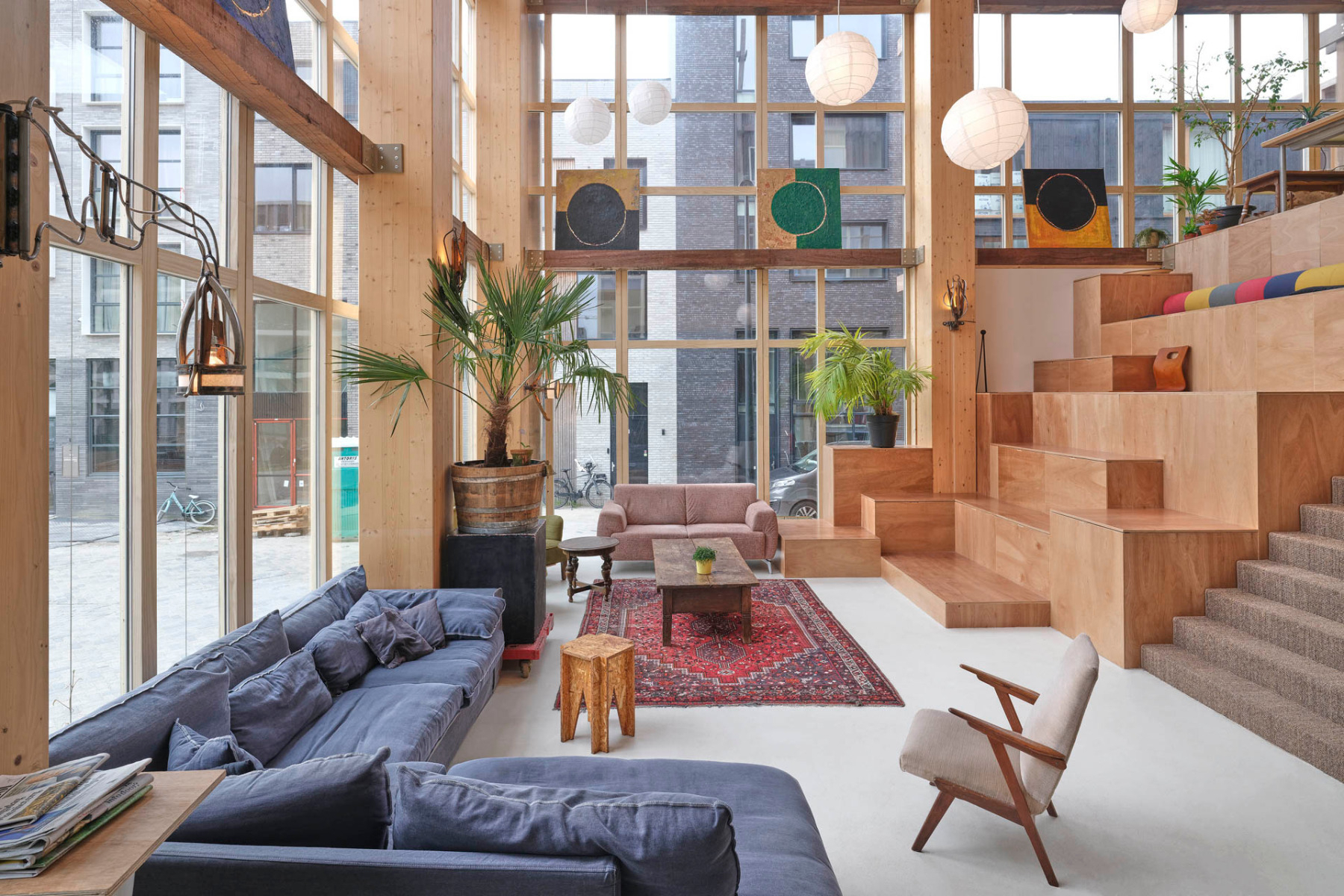800 m² of communal space are hidden behind the facades of reclaimed wood

This week I attended a STEPS Collective monthly meetup where the topic was Money. It was a really well-run session by Esther Hayes Grossman and included the first example I’ve seen of people silently voting on a topic by turning on their video in response to a prompt.
During the discussion, one participant shared details of ‘De Warren’ in Amsterdam as an example of something that “makes no sense” to real estate people because there’s no profit motive involved. It made me think how interesting it would be to live in such a space — check out that ‘Macchu Picchu’ stairway!
Having lived on a small row of terraced houses for nine years prior to moving to where we currently live, what I miss are the serendipitous moments of bumping into neighbours and having a chat in the shared back lane. I think we all need more of that in our lives, to build solidarity. It’s all well and good thinking about online social spaces, but we are embodied, social creatures.
At the De Warren newbuild by a housing cooperative on the outskirts of Amsterdam, 36 affordable rental apartments and about 800 m² of communal space are hidden behind the facades of reclaimed wood.
[…]
The architects determined the building’s spatial programme with the members of the cooperative in four workshops. Thirty percent of the space in the house – i.e. about 800 m² – is set aside for communal rooms distributed on all storeys.
[…]
The building’s collage-like facades differ it quite considerably from its neighbours. The outer cladding in reclaimed wood is just the most visible characteristic of a comprehensive sustainability concept. This includes 30-m ground piles to which piping has been added, meaning they thus serve as geothermal heat exchangers for the heat pump that supplies the house with heat. The electricity for the heating is provided by a photovoltaic panel array on the roof. Altogether the building has an EPC rating of 0,16 according to Dutch energy regulations and is thus “energy-positive”.
The glazed lounge at the corner of the building marks the start of a continual staircase – called the Macchu Picchu stairway by the architects – that connects the numerous communal spaces scattered through the house, such as the children’s playroom, a music studio, several co-working offices, a meditation room, a shared roof terrace with greenhouses and several communal kitchens.
Source: DETAIL